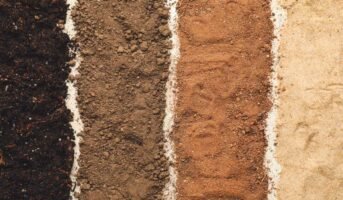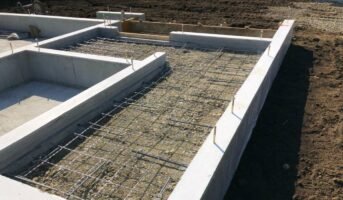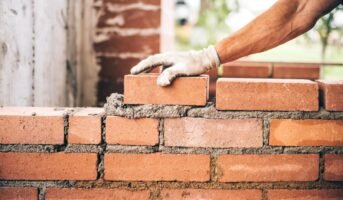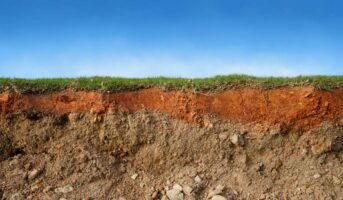Choosing the proper soil for your building projects is essential because it significantly affects how well your project turns out. Some types of soils are ideal for construction, while others aren’t as good. To avoid having a construction with a weak foundation, you must be careful when planning your foundation.
Using the incorrect soil type for your foundation or construction can be highly disastrous. It might result in the building’s foundation becoming flimsy, sinking, developing cracks, or, worst of all, collapsing. cannot be overemphasised.
Types of soils: Attributes of a good construction soil
Some characteristics of soil that make it perfect for your project construction include the ones listed below:
- It must be stable both in the dry and wet seasons.
- It must have a solid framework and physical characteristics for stability during construction.
- For any type of structure to be built on good soil, it must have a balanced chemistry.
- The soil should be able to hold onto rainwater to resist erosion and runoff.
Sand

Source: Pinterest
It is the most frequently used construction material. It is made up of rock fragments and hard minerals like silicon dioxide. They are the biggest kind of soil particles, and each one can be seen with the naked eye. The large, generally stable sand particle size improves drainage in compacted soils, increases soil aeration, and creates tilt, which supports plant growth.
Fine sand has a particle size range of 0.075 to 0.425 mm, medium sand of 0.425 to 2 mm, and coarse sand of 2 to 4.75 mm. When you rub wet or dry sandy soil between your fingers, the larger particles give a grainy texture to the soil. It also makes the soil light and clumpy when you attempt to stick it together with your hand. The particle shape can be sub-angular, angular, flat, rounded, or elongated. It has a tough, smooth, or polished texture.
Advantages of sand
- Suitable for construction because it supports heavy loads
- It provides good drainage
- Contains neither organic nor impure substances
Silt
A sedimentary material with a size between both sand and clay is called silt. It creates a fertile deposit on the valley floor when carried by floodwaters. Silt has particles between 0.002 and 0.06 mm in size. Due to its fineness, silt is a non-plastic or low elastoplastic material. Due to its particle size, silt soil becomes smooth when wet, allowing you to shape it into balls or even other shapes easily. When silt soil is exceptionally wet, it combines easily with water to create fine, runny mud puddles.
Advantages of silt
- Fertile ground
- Greater capacity to hold water
- Easy to work with as compared to other soils
Clay

Source: Pinterest
The smallest soil particles are clay particles, less than 0.002 mm in size. It is made up of nanoscopic and sub-microscopic fragments resulting from the chemical deterioration of rocks. Cohesive soil containing fine grains is clay. They readily adhere to one another when wet or dry, taking on a sticky or glue-like texture.
Clay soils hold much water because of the spaces between clay particles, which comprise more than 25% of clay. Clay swells when exposed to water and contracts when it dries out. Clay particles are thin, flat, and covered with tiny plates, unlike sand particles, which are typically rounded. Organic clay is used in building projects as mud mortar because it is highly compressible and extremely strong when dry.
Advantages of clay
- Ideal substance for tropical climates
- Clay bricks that last add value and style
- The properties of insulation reduce energy costs
Loam

Source: Pinterest
The properties of these three different textures, which are combined to form loam, benefit fluid retention, air circulation, drainage, and fertility. These soils have good drainage, are fertile, and are simple to work with. They may be sandy or clay loam, depending on what makes up the majority of their composition.
The interaction of the other soil constituents creates the loam. For instance, a soil that contains 30% clay, 50% sand, and 20% silt is a sandy clay loam; the soil types listed before ‘loam’ are listed in the order in which their constituent particles are most prevalent in the loam. The terms ‘clay loam,’ ‘silt loam, and ‘sand loam’ are used to describe soils that contain these constituents in the majority.
Advantages of loam
- Construction-friendly because it holds water at a balanced rate
- Controls air humidity if applied as a layer to interior walls
- Ideally combined with straw to build walls
Different soil types have different physical and chemical characteristics, and each has a unique role in construction. You must first determine the soil type in your area or construction site before using any specific soil, whether you intend to use it for construction or agriculture.
FAQs
Which kind of soil is ideal for the construction of buildings?
Since loam contains the ideal proportions of clay, sand, and silt, it is the ideal soil type for construction. It strikes the perfect balance between their best qualities to support a foundation. Loam responds well to moisture and does not drastically shift, expand, or contract.
What part does the soil play in the choice of construction system?
In addition to determining the structure's bearing capacity, soil quality also guarantees that the structure will be stabilised. Several variables, including the weather, climate change, and the previous use of the land, influence soil quality.
| Got any questions or point of view on our article? We would love to hear from you. Write to our Editor-in-Chief Jhumur Ghosh at [email protected] |
Housing News Desk is the news desk of leading online real estate portal, Housing.com. Housing News Desk focuses on a variety of topics such as real estate laws, taxes, current news, property trends, home loans, rentals, décor, green homes, home improvement, etc. The main objective of the news desk, is to cover the real estate sector from the perspective of providing information that is useful to the end-user.
Facebook: https://www.facebook.com/housing.com/
Twitter: https://twitter.com/Housing
Email: [email protected]











